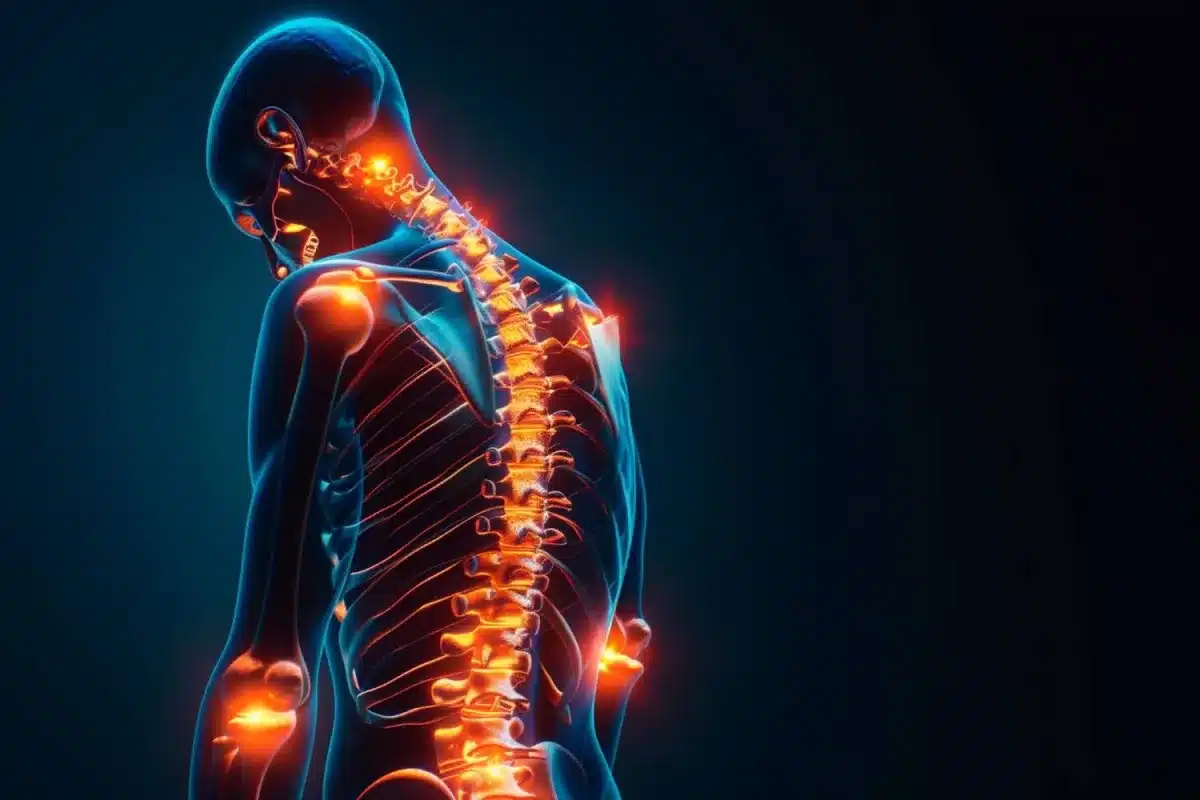If you notice stiffness, swelling, or discomfort in your fingers, wrists, knees, hips, or any joint, you could be dealing with arthritis. Arthritis, affecting millions of people worldwide, is a condition where the joints in the body become abnormal due to any cause. It could be due to “wear and tear” of the joint, or it could be due to inflammation inside the joint. There are numerous symptoms associated with arthritis & many types of arthritis affecting different areas. There are also risk factors to be aware of regarding arthritis and how it can possibly affect you.
Key Symptoms of Arthritis
Arthritis can sneak up on you. You might notice changes in your joints that weren’t there before. There are a few common symptoms you should keep an eye out for.
Joint Pain
Pain is the first sign that something’s not right with your joints. You might feel a dull ache in your fingers after a busy day of using your hands. As arthritis progresses, this pain can become more constant. It might even wake you up at night. The pain can vary from a mild discomfort to a sharp & intense sensation. You might feel it when you move or even when you’re resting.
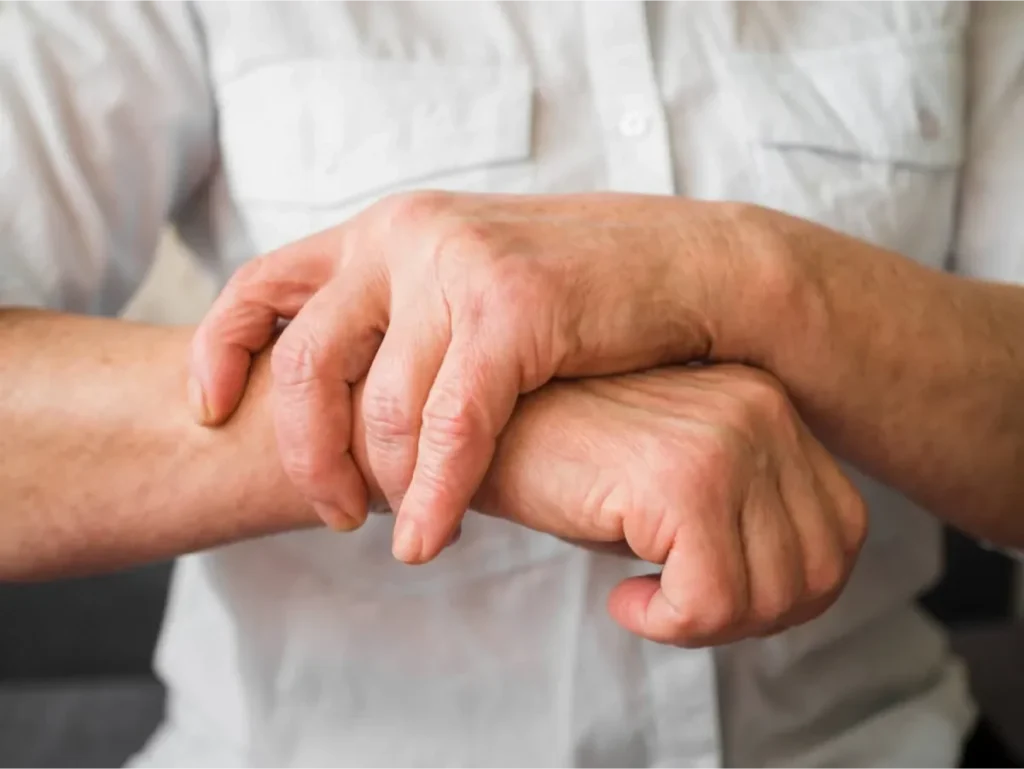
Stiffness
Stiffness is another big sign of arthritis. You might find it hard to get moving in the morning or after sitting for a while. This stiffness can make simple tasks like opening a jar or buttoning a shirt much harder than normal. It’s often worse when you wake up and the stiffness can last for an hour or more. As the day goes on, you might notice it easing up a bit.

Swelling
Swelling around your joints can be another symptom of arthritis. Your fingers might look puffier than usual. This happens because the tissues around your joints get inflamed. The swollen area might feel warm to the touch and look red. You might notice this swelling comes and goes, or it might stick around for a while.
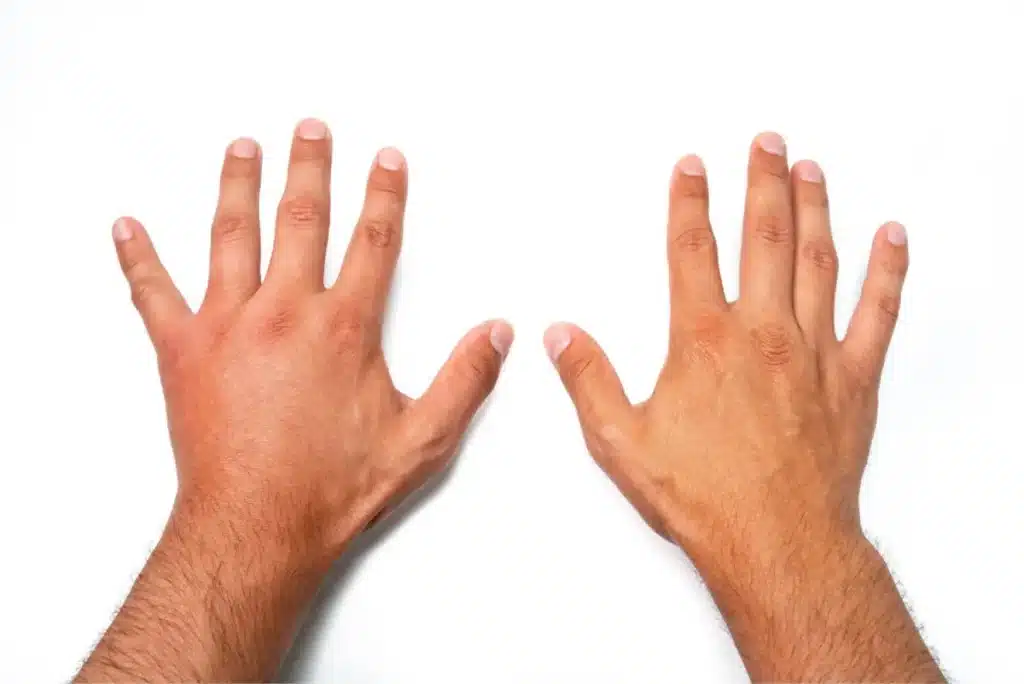
Reduced Range of Motion
As arthritis affects your joints, you might find it harder to move them like you used to. You might not be able to bend your fingers all the way or straighten them out completely. This limited range of motion can make things you once did without thinking more difficult such as tying your shoelaces or reaching for something on a high shelf.
You might hear clicking or popping sounds when you move the affected joint as well.
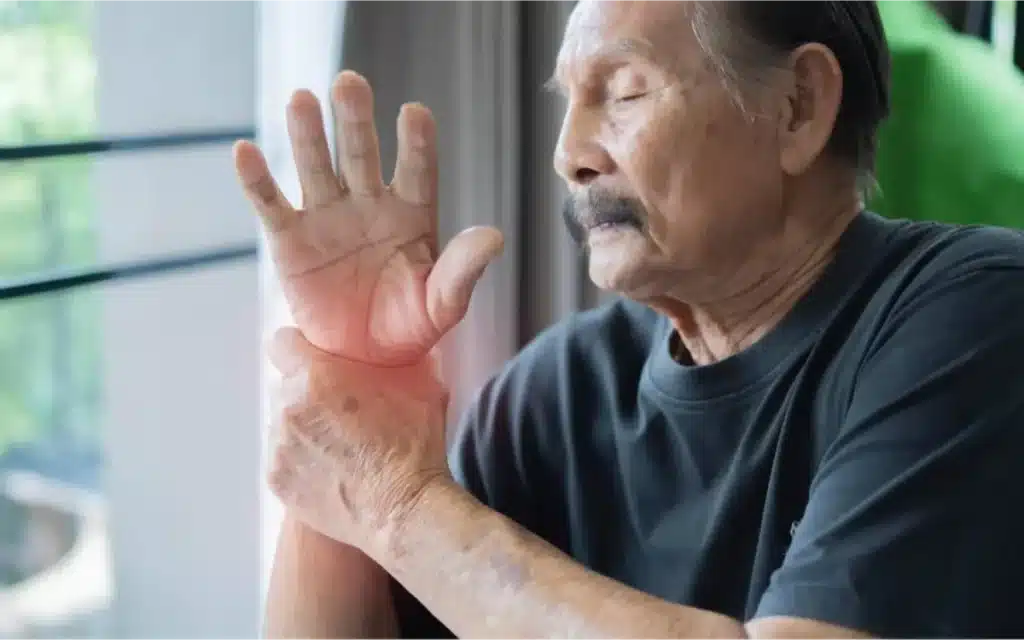
Common Types of Arthritis
There are many types of arthritis. There are several forms that can affect your joints in different ways.
Osteoarthritis
Osteoarthritis is the most common form of arthritis. It’s often called the “wear and tear” arthritis because it is part of normal aging. Earlier onset osteoarthritis can also occur if joints are overused repetitively. As you age, the cartilage that cushions your bones starts to break down. This can lead to pain, stiffness, and swelling in your joints. You might notice these symptoms in your hands, hips, or knees. If you’re carrying extra weight, you’re putting more stress on your joints, which can speed up this process.

Rheumatoid Arthritis
Rheumatoid arthritis is an autoimmune arthritis. This means your immune system accidentally gets hyperactivated and can start attacking your own joints. It can cause severe joint damage if left untreated. RA typically affects multiple joints at once in a symmetrical pattern. You might feel pain, stiffness, and swelling in your hands, wrists, or feet. Morning stiffness that lasts for hours is a sign of RA.
Gout
Gout is a painful form of arthritis that often starts in your big toe. It happens when there’s too much uric acid in your body, which forms sharp crystals in your joints. Gout attacks can come on suddenly. During an attack, you might experience intense pain, redness, and swelling in the affected joint. Certain foods, drinks, and medications can trigger gout flare-ups.
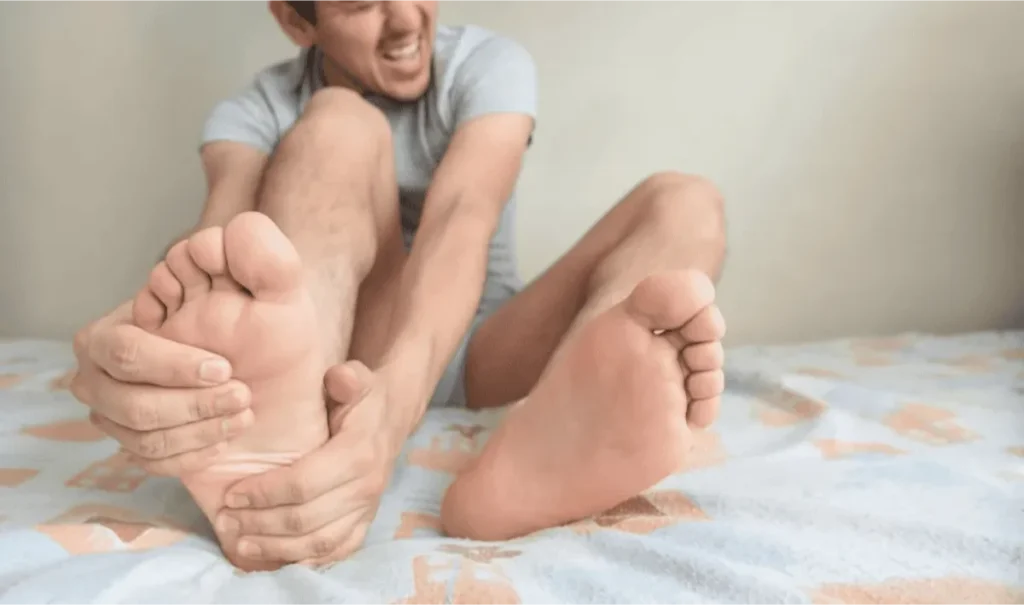
Psoriatic Arthritis
Psoriatic arthritis affects some people who have psoriasis, a condition that causes red, scaly patches on your skin. This type of arthritis can cause joint pain, stiffness, and swelling. You might notice changes in your nails, like pitting or separation from the nail bed. Psoriatic arthritis can also cause your tendons to swell up in the fingers and toes, causing them to look like sausages.
Risk Factors for Developing Arthritis
You might wonder what makes some people more likely to develop arthritis than others. Several factors can increase your chances of getting this condition.
Age
As you get older, your risk of developing arthritis goes up. This is especially true for osteoarthritis, the most common type. Your joints have been working hard for years, and the years of use can start to show. Don’t think arthritis is just an old person’s problem though. It can affect people of ALL AGES including even young adults.

Gender
Your gender plays a role in your arthritis risk. Women are more likely to develop most types of arthritis. This might be due to differences in joint structure and hormone levels. Women tend to have thinner cartilage, more joint instability, and uneven mechanical loading. The sharp drop in hormone levels during menopause can also trigger arthritis development. On the flip side, men are more prone to gout but then women can be equally prone after menopause hormone shifts.
Genetics
Your family history can influence your chances of getting arthritis. If your parents or siblings have arthritis, you might be at a higher risk. While you can’t inherit the disease itself, you can inherit a susceptibility to it. Certain genes, like HLA-B27, are linked to a higher risk of spondyloarthritis, but having these genes doesn’t mean you’ll automatically get arthritis.
Lifestyle Factors
Your daily habits can have a big impact on your arthritis risk. Smoking is a major risk factor for rheumatoid arthritis. It can make your symptoms worse and reduce the effectiveness of your treatment. Carrying extra weight puts more stress on your joints like your knees and hips. This can lead to osteoarthritis or make existing arthritis worse. Regular exercise can help protect your joints, while a lack of physical activity can increase your risk. Your diet and oral health matter too. Poor gum health has been linked to rheumatoid arthritis development.

Do You Need Help With Arthritis?
Understanding the signs and risk factors of arthritis is important for maintaining joint health and slowing the condition’s progression. Recognizing symptoms early allows you to seek medical advice and take control of your well-being. If you’re dealing with persistent joint pain, stiffness, or swelling, it’s important to consult a specialist. Lomibao Rheumatology & Wellness Care in Rowlett, Texas, is here to help with all your arthritis needs, offering personalized care and treatment options.


